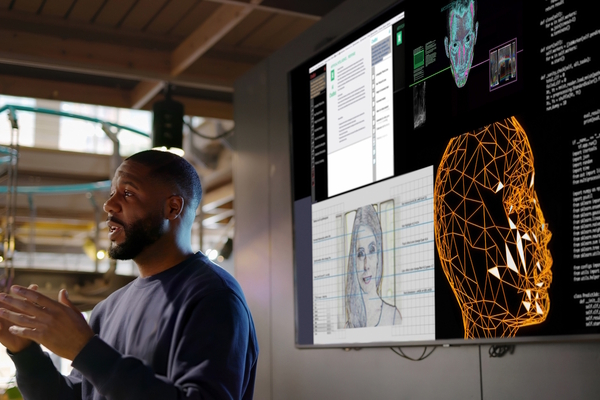Recruiting the over-50s

Alexia Pedersen at O’Reilly asks whether L&D is the answer to strengthening the UK’s over-50s labour market
It’s no secret that Britain is grappling with a stagnant workforce, with current UK productivity levels barely higher than in 2019.
However, the recent Spring Budget introduced a raft of measures to break down the current barriers preventing workplace productivity across Britain. From attracting the long-term sick back to employment, to ’returnerships’ pensions and additional childcare funding, the government has seemingly made a strong commitment to upskill and retrain workers of all ages.
Rishi Sunak and Jeremy Hunt introduced the idea of ’returnerships’ as part of a host of measures to reduce the number of economically inactive people in the UK. A new strategy targeted at over-50’s; these apprenticeships will be targeted at those looking to return to work – emphasising adaptability and prior experience, as well as reducing the number of credentials and training programmes required before participants can re-enter the workforce.
However, with digital transformation remaining a top priority and challenge for UK CEOs, how can employers ensure mature workers are able to keep pace with the transformative digital technologies that are disrupting workplaces?
The business case for a diverse workforce
Jeremy Hunt argued that the over-50 generation includes "the most skilled and experienced people we have," and he’s not wrong. A lot of these economically inactive citizens hold the diversity of experience that British businesses need.
Upskilling these workers to re-enter the workforce will not only plug vital gaps in the current workforce but also help employers to avoid resource-intensive recruitment processes.
Yet, a recent study from Aviva found that more than two-fifths (44%) of employees aged 50+ who are currently in the workforce feel unsupported when it comes to their career ambitions and objectives, compared to only 25% of those aged 25 to 34.
Therefore, to encourage mature workers back into the workforce and to increase support for those already in employment, business leaders need to ensure that individuals are comfortable in their environment and feel fully equipped for their new or evolving roles.
It can be easier for recent retirees to return to the workforce – as early retirement is often an informal process, and barriers to returning are much lower since skills are less out of date.
However, businesses must be vigilant and open to helping those of all ages develop their technical skills and confidence to return to the workplace. But what will this look like in practice?
Democratising workplace learning
Dr Emily Andrews, deputy director of work at the Centre for Ageing Better explains that a tax break would not be the right measure to encourage over 50s back into work. “Tax reform is rarely mentioned by older people when asked about what they need to return to work. Instead, flexible working and other support from management are key reasons why some stay in employment and others leave,” she explained.
Therefore, businesses need to rethink their employee experience strategies and ensure that they focus on motivating mature employees through personalised learning and development (L&D) opportunities. However, companies need to bear in mind that older workers have been away from a classroom environment for a long time.
In this case, learning & development – specifically ‘learning in the flow of work’ capabilities – should not be underestimated in its ability to upskill mature workers and support knowledge transfer, both for current employees and for those considering re-entering the workforce.
Learning in the flow of work
Human resources and leadership advisor and analyst Josh Bersin coined the phrase “learning in the flow of work” to refer to a paradigm in which users learn something, apply it, and then go back to work.
This is different from a traditional learning approach, like reading a book or attending a seminar or conference to build knowledge around a desired topic. That has its place, but the ‘learning in the flow’ style of L&D empowers employees with the tools to quickly locate contextually relevant answers to their questions at their point of need.
It can be challenging to find time during traditional working hours to break away and focus on a structured course. It can be far more efficient to pinpoint information in the moment of need and get quick solutions to overcome the roadblocks they face at any given moment.
By empowering learning in the flow of work, organisations will help to create a culture of continuous learning – encouraging team members to take on new challenges, seek out opportunities for growth and share their knowledge with others.
For best results, organisations should consider offering ‘in the flow of work’ training opportunities via a quality L&D partner that can provide flexibility with a choice of how to learn, and when to learn, which can meet the unique learning style and objectives of each individual.
With many over 50s offering a wealth of untapped experience and knowledge, business leaders should encourage learning and upskilling opportunities to ensure these workers are supported and have the tools at their disposal to keep pace with today’s level of technological change.
Ultimately, embracing learning at the executive level and building a strong L&D programme is the foundation of a successful ‘return to the workplace’ strategy, and if done right, will become an integral part of retaining talent, increased productivity and long-term business growth.
Alexia Pedersen is VP of EMEA at O’Reilly
Main image courtesy of iStockPhoto.com

Business Reporter Team
Most Viewed
Winston House, 3rd Floor, Units 306-309, 2-4 Dollis Park, London, N3 1HF
23-29 Hendon Lane, London, N3 1RT
020 8349 4363
© 2025, Lyonsdown Limited. Business Reporter® is a registered trademark of Lyonsdown Ltd. VAT registration number: 830519543





